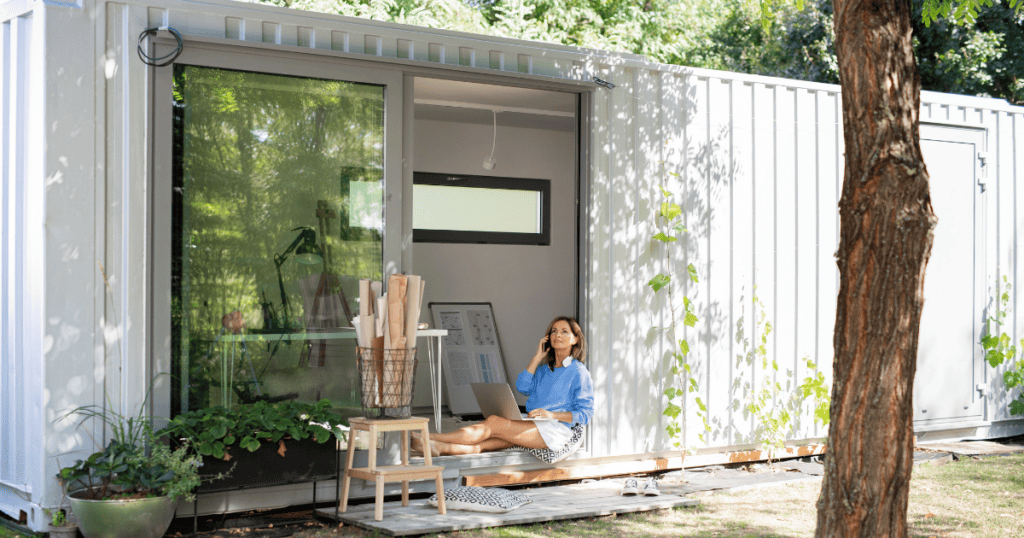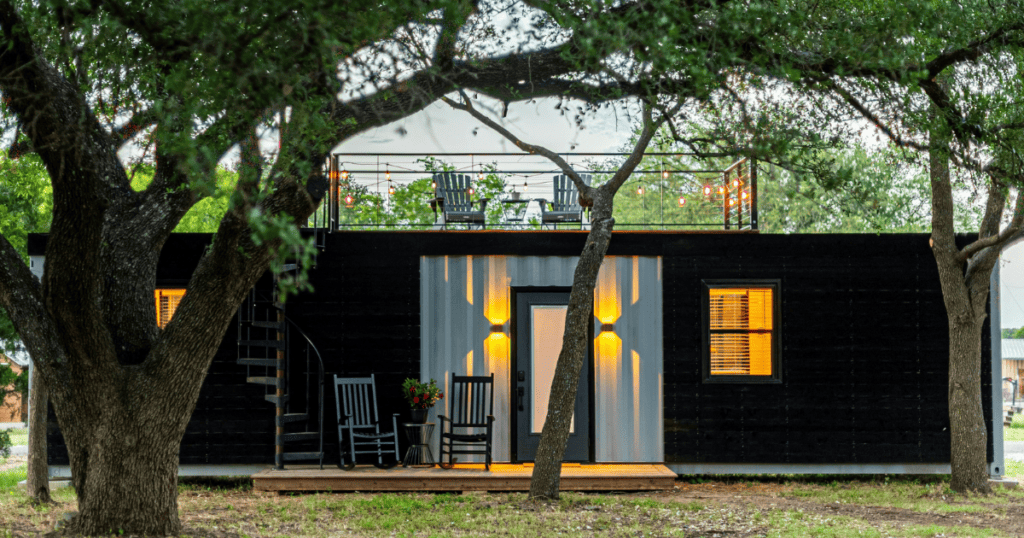Is a shipping container tiny home the right option for you? In a world increasingly concerned about environmental sustainability, innovative solutions are emerging to address the challenges of housing while minimising the carbon footprint. One such solution gaining traction is the repurposing of shipping containers into eco-friendly tiny homes. Tiny homes can be an amazing opportunity to build your dream home and live a more sustainable life.
In the following article, we’ll delve into the numerous ways in which a modified ContainerCo shipping container home can contribute to sustainable living, from repurposing materials to energy efficiency and reduced environmental impact.
Repurposing and Recycling Shipping Containers
The first step towards eco-friendliness in shipping container homes is the repurposing and recycling of these steel giants. Shipping containers, after completing their journeys across the seas, often find themselves abandoned or left to rust in container yards. Converting these containers into homes gives them a new lease on life and prevents them from becoming additional waste in landfills.
By repurposing shipping containers, we reduce the demand for new construction materials, which typically involve the extraction of raw resources and significant energy consumption. This sustainable approach aligns with the principles of the circular economy, where existing resources are utilised efficiently, promoting a more responsible and eco-friendly construction process.
Energy Efficient Tiny Homes
One of the key advantages of shipping container homes is their inherent energy efficiency. The steel structure of shipping containers provides a sturdy and durable building envelope, reducing the need for extensive additional materials. The insulation process, essential for maintaining comfortable living conditions, is simplified in container homes due to their compact and modular design.
Various insulation materials, such as eco-friendly options like recycled denim or soy-based foam, can be used to regulate temperature within the container. This high level of insulation contributes to reduced energy consumption for heating and cooling, making shipping container homes more energy-efficient compared to traditional construction methods.
Additionally, the compact size of these homes minimises the space that needs to be heated or cooled, further enhancing their energy efficiency. This feature is particularly advantageous for eco-conscious individuals seeking to reduce their carbon footprint and lower their energy bills.

Sustainable Design Principles of a Tiny Home
The adaptability of shipping containers allows for creative and sustainable design principles to be incorporated into tiny home construction. Architects and designers can use their imagination to optimise the use of space and natural light, integrating passive design strategies that reduce the reliance on artificial lighting and heating.
Large windows and strategically placed openings not only enhance the visual appeal of shipping container homes but also facilitate effective cross-ventilation and natural lighting. This reliance on natural resources decreases the need for electricity, making these homes more eco-friendly and sustainable in the long run.
Furthermore, the modular nature of shipping containers allows for easy expansion or modification, enabling homeowners to adapt their living spaces based on changing needs. This flexibility aligns with the idea of creating homes that can evolve with their inhabitants, discouraging the need for frequent relocations or the construction of new structures.
Off-Grid Living in a New Zealand Tiny Home
Shipping container homes lend themselves well to off-grid living, a lifestyle choice that emphasises self-sufficiency and minimal environmental impact. The compact size of these homes makes it easier to power them using alternative energy sources, such as solar panels or wind turbines.
Solar panels can be installed on the roof of a shipping container home to harness sunlight and convert it into electricity. With advancements in solar technology, off-grid living has become more accessible, allowing homeowners to generate their own power sustainably. Additionally, rainwater harvesting systems can be integrated to collect and store water, further reducing the reliance on traditional water sources.
Off-grid shipping container homes offer an attractive alternative for individuals seeking independence from centralised utilities, contributing to a more sustainable and resilient lifestyle. This approach aligns with the growing trend towards decentralisation and self-sufficiency in the face of environmental challenges.

How Tiny Homes Can Reduce Waste
Traditional construction methods often generate significant amounts of waste, contributing to environmental degradation and increased landfill usage. In contrast, the conversion of shipping containers into homes generates less waste during the construction process.
The modular nature of shipping containers allows for precision in planning and construction, minimising the amount of excess materials. Additionally, any waste generated during the modification of shipping containers can be recycled or repurposed, further reducing the environmental impact of the construction process.
By choosing shipping container homes, individuals contribute to a more sustainable construction industry that prioritises efficiency and waste reduction. This shift towards responsible building practices is essential for mitigating the environmental impact of the housing sector, which is notorious for its resource-intensive nature.
Cost-Effective Sustainable Homes
Apart from their environmental benefits, shipping container homes also offer a cost-effective alternative to traditional housing. The initial investment in purchasing and modifying a shipping container is often lower than the cost of building a conventional home. This affordability makes sustainable living more accessible to a broader range of individuals, democratising the eco-friendly housing movement.
Furthermore, the energy-efficient features of shipping container homes contribute to long-term cost savings. Lower energy bills, reduced maintenance costs, and the potential for off-grid living make these homes an attractive option for those looking to embrace a sustainable lifestyle without breaking the bank.
Is a Shipping Container Tiny Home Right for You?
Shipping container homes exemplify the intersection of sustainability and innovation in the housing industry. From repurposing and recycling materials to energy-efficient design and off-grid living capabilities, these eco-friendly tiny homes offer a compelling solution to the environmental challenges associated with traditional construction methods.
As our society becomes increasingly conscious of the need for sustainable living, shipping container homes stand out as a viable and practical option for those seeking to reduce their ecological footprint. By embracing the principles of repurposing, energy efficiency, and sustainable design, individuals can transform shipping containers into not just homes but symbols of a more sustainable and environmentally conscious future.

